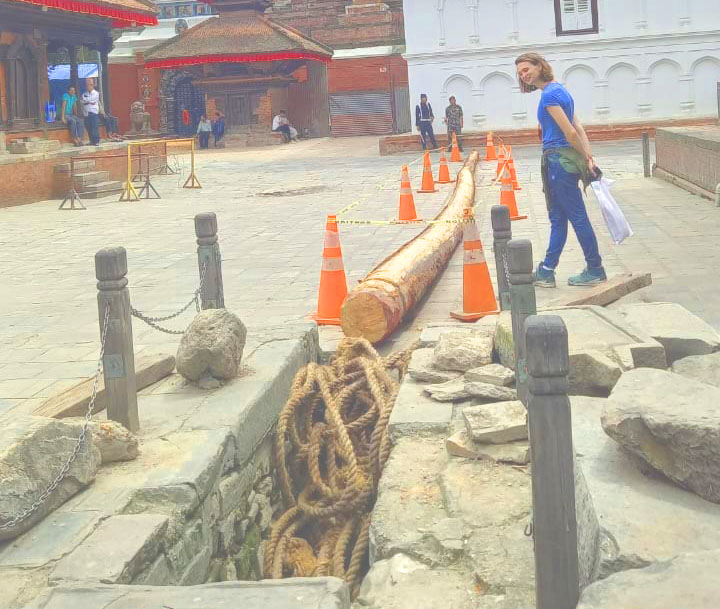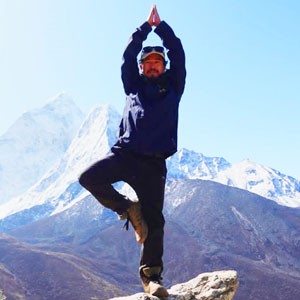Historical Significance: A Festival Started by King Gunakamadeva
Indra Jatra dates back to the 10th century, when King Gunakamadeva of the Malla Dynasty established the festival to worship Lord Indra, the god of rain and heaven. The celebration not only commemorates Kathmandu's old cultural identity, but also marks the end of the monsoon season and the beginning of Nepal's most important festive season. Over the ages, this celebration has evolved into a community-led endeavor to conserve Newar traditions and the Kathmandu Valley's living heritage.
The Story of Indra Jatra:
Indra Jatra is based on a lovely legend from Hindu mythology. Lord Indra, the king of heaven and god of rain, once came down to earth to gather parijat flowers (night-blooming jasmine) for his mother. While gathering flowers in Kathmandu Valley, he was mistaken for a robber and captured by residents. The people tied him up and showed him in the square, unaware that he was a god.
When Indra's mother realized his absence, she came down to earth to find him. The people of Kathmandu realized their mistake after watching her love and sadness. They paid tribute to Indra by freeing him and giving prayers. Indra was pleased with their respect and blessed the Valley with plenty of rain and a healthy harvest.
Since then, the Newar community celebrated this occasion with elaborate rituals, dances, and processions. The event also honors ancestors and the souls of the departed. Indra Jatra is more than a tale; it is a custom that shows the peace between gods and humanity, thankfulness to nature, and the force of devotion. It has evolved into a vibrant eight-day event, preserving Kathmandu's traditional culture for over a thousand years.
Where is Indra Jatra Celebrated?
The grand celebration is mostly held in Kathmandu Durbar Square, a UNESCO World Heritage Site where most rituals and cultural dances are performed. However, celebrations spread to Kathmandu's other ancient areas, including Hanuman Dhoka, Basantapur, Kilagal, Indra Chowk, and nearby Newar communities.
How Locals Celebrate?.
For the locals, Indra Jatra is a time of devotion and joy. Families light traditional oil lamps, offer ceremonial offerings, and gather in the streets to watch dances, processions, and the well-known Kumari Jatra. The community actively participates by putting up ceremonial displays, volunteering for processions, and preserving customs passed down through generations. The prepare unique cuisine called Samay Baji and offer to gods and their community and family. Likewise, many relatives were called to their home to observe grand celebration during the Jatra.
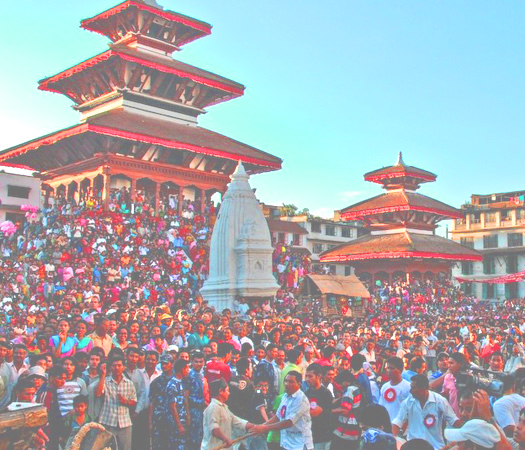
2025 Celebration Dates and Highlights
The 2025 Indra Jatra is slated to start from 6th to 13th September 2025 (precise dates are dictated by the lunar calendar). Tourists may experience eight days of rituals, dances, and cultural exhibits. Here is a breakdown of every day:
Day 1: Festival Opening and Lingo Raising Ceremony.
The Indra Jatra celebration kicks out with the magnificent Lingo Raising Ceremony at the Hanuman Dhoka Palace in Kathmandu Durbar Square. A sacred ritual overseen by priests and elders involves the erection of a towering lang (wooden ceremonial pole) tastefully covered in bright prayer flags. This pole represents Lord Indra’s arrival in Kathmandu and signals the official start of the celebrations.
The square comes alive with traditional Newar music, including the rhythmic beats of dhimey drums, cymbals, and flutes, played by local musicians. Community members, dressed in cultural attire, gather to witness this ancient tradition, offering flowers, incense, and prayers for blessings.
Day 2: Display of Akash and Sweta Bhairav
On the second day of Indra Jatra, Kathmandu is filled with devotion as the sacred pictures of Bhairav, a strong avatar of Lord Shiva, are revealed. The gigantic Sweta Bhairav mask at Hanuman Dhoka Palace is on display to the public, with its angry face representing heavenly protection over the city. At the same time, the revered picture of Akash Bhairav appears at Indra Chowk, where devotees form long queues to get blessings.
This is a very spiritual day, and villagers make contributions of flowers, oil lamps, and incense to create a hallowed environment around the shrines. Masked dances and cultural performances take place around the square, with families and communities dressed in traditional attire. This fusion of faith, music, and dance sets the right tone for the days ahead.
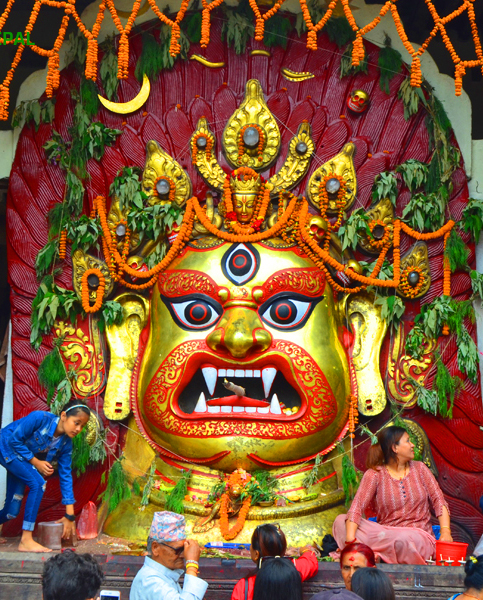
Day 3: Performances by Lakhey, Sawa Bhakku, and Mahakali Nach
On the third day, the streets of Kathmandu are filled with spectacular masked dances that bring mythology to life. These performances are more than entertainment; they are sacred traditions passed down for centuries, each carrying a deep spiritual meaning.
- Lakhey Dance: According to tradition, the Lakhey is a terrifying monster who has become a protector of children and the city. Dancers wearing flowing crimson costumes and a striking mask with enormous teeth race through the streets, signifying the battle against bad spirits. Crowds celebrate as Lakhey dancers bless children and remove negative energy.
- Sawa Bhakku Dance: This intense performance represents fierce deities from the Newar pantheon. Dancers wear large, elaborate masks and perform powerful, rhythmic steps to the beat of dhimey drums and cymbals, symbolizing divine strength and protection over Kathmandu Valley. It's orginally practice in Bhaktapur but during this celebration cultural community of people come to show their culture.
- Mahakali Nach: This dance honours Goddess Mahakali, the powerful form of Goddess Durga, and depicts her ability to fight evil and restore equilibrium. Performers dressed in black and adorned with ornaments tell stories of divine battles, captivating the audience with dramatic spins and jumps.
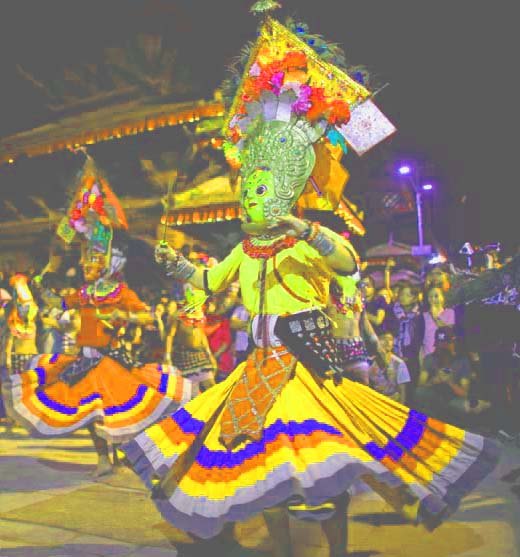
Day 4: Pulu Kisi Dance (The Elephant Dance)
The fourth day of Indra Jatra is packed with joy and excitement as the popular Pulu Kisi Dance takes over the streets. Pulu Kisi, which means "elephant" in Newar, portrays Airavata, Lord Indra's miraculous white elephant. According to folklore, Pulu Kisi wanders Kathmandu in pursuit of Indra's kidnapped mother, giving a lighthearted element to the festival's mythology.
Performers dressed in a massive, beautifully decorated white elephant costume parade through the narrow alleys and squares, swaying and “charging” at crowds with playful energy. The streets echo with the beats of dhimey drums, ringing bells, and lively flute music, drawing laughter and cheers from onlookers of all ages.
Day 5: Devi Pyakhan and Cultural Shows
The fifth day of Indra Jatra is a great celebration of Newar talent and storytelling, with Devi Pyakhan a traditional dance-drama at the center. This religious performance brings ancient legends of gods and goddesses to life, narrating divine stories passed down through centuries using graceful movements, colorful costumes, and expressive gestures.
Families, visitors, and devotees flock to watch these events, creating a carnival-like environment infused with laughing, music, and the smells of festive street delicacies. Beyond amusement, these cultural exhibits allow the Newar people to worship their deities, maintain their heritage, and carry along traditions to future generations.
Day 6: The Dagain Procession
The Dagain Procession, on Day Six of Indra Jatra, creates a solemn and spiritual atmosphere in Kathmandu Durbar Square. The golden sword is crucial to this rite, representing Lord Indra's might and protection over the city. The sword is carried through the streets by loyal community members, representing heavenly authority and blessings for wealth and safety. The Dagain Procession is more than just a parade; it is a living spiritual ceremony that combines people's devotion and the force of tradition to showcase the deeper religious essence of Indra Jatra.
Day 7: Kumari Jatra – The Living Goddess’ Procession
The Kumari Jatra, featuring Nepal's famed Living Goddess Kumari, takes place on the festival's seventh day. For generations, the Kumari, considered to be the embodiment of the holy goddess Taleju, has been paraded through Kathmandu's streets in a gorgeously carved wooden chariot, accompanied by the majestic chariots of Ganesh and Kartikeya.
This day attracts thousands of devotees from all across Nepal, as well as tourists from all over the world, who want to experience this unique living tradition. The streets of Kathmandu Durbar Square are packed with people, and villages along the path actively participate by offering prayers, flowers, and blessings.
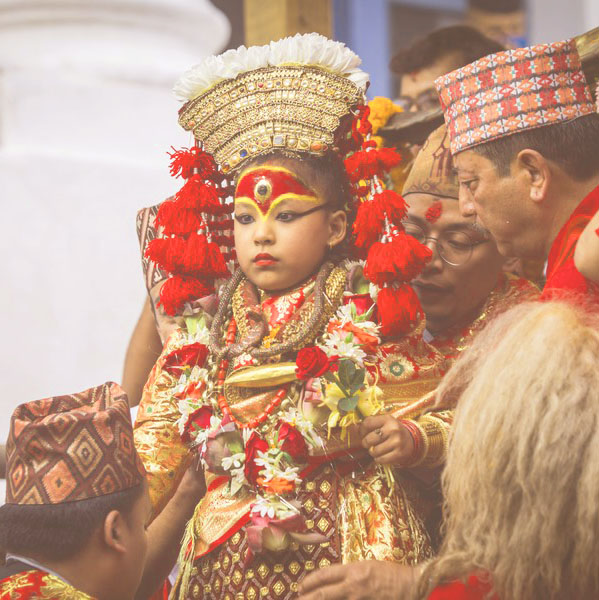
Day 8: Closing Ceremony and Lingo Lowering
The festival concludes with the ceremonial lowering of the lingo pole, symbolizing Lord Indra’s return to heaven. Locals celebrate with feasts, music, and prayers, marking the end of the eight-day celebration.
Tips & Safety for Indra Jatra
- Wear comfortable shoes for walking in crowded streets and wear culure friendly cloth with long pant and T-shirt.
- Keep your valuables secure; pickpocketing can happen in busy areas.
- Stay hydrated and carry a water bottle.
- Follow local customs and dress modestly near temples and shrines.
- Respect rituals and performances; avoid touching sacred objects.
- Use public transport or walk; roads are often closed for chariots.
- Keep children close in crowded areas.
- Avoid standing directly under moving chariots for safety.
- Carry a small first-aid kit for minor injuries.
- Be patient and polite; locals are welcoming but streets can be congested.
- Take photos respectfully, without disturbing rituals.
- Plan to arrive early for a better view of processions.
Visit www.bukiadventure.com to discover more about Nepal's culture, festivals, and trekking adventures.


